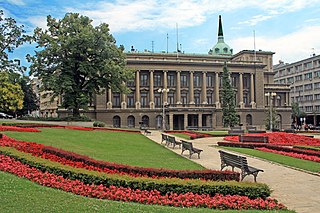
The Central Provinces and Berar was a province of British India and later the Dominion of India which existed from 1936 to 1950. It was formed by the merger of the Central Provinces with the province of Berar, which was territory leased by the British from the Hyderabad State. Through an agreement signed on 5 November 1902, 6th Nizam Mahbub Ali Khan, Asaf Jah VI leased Berar permanently to the British for an annual payment of 25 lakhs Rupees. Lord Curzon decided to merge Berar with the Central Provinces, and this was proclaimed on 17 September 1903.

Vindhya Pradesh was a former state of India. It occupied an area of 23,603 sq. miles. It was created in 1948, shortly after Indian independence, from the territories of the princely states in the eastern portion of the former Central India Agency. It was named for the Vindhya Range, which runs through the centre of the province. The capital of the state was Rewa. It lay between Uttar Pradesh to the north and Madhya Pradesh to the south, and the enclave of Datia, which lay a short distance to the west, was surrounded by the state of Madhya Bharat.

The Raj Bhavan, formerly known during British India as the Bangalore Residency, the Mysore State Residency, or, simply, the Residency, is the official residence of the Governor of Karnataka. It is located in the capital city of Bangalore, Karnataka. During Mysore Kingdom, the building was home to the Resident of the British Agency that was in subsidiary alliance with the Kingdom of Mysore.
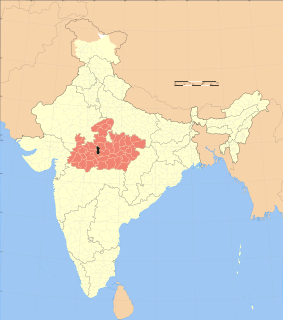
Bhopal District is a district of Madhya Pradesh state in central India. The city of Bhopal serves as its administrative headquarters. The district is part of Bhopal Division.
Raj Bhavan is the official residence of the Governor of Uttar Pradesh. It is located in the capital city of Lucknow, Uttar Pradesh.
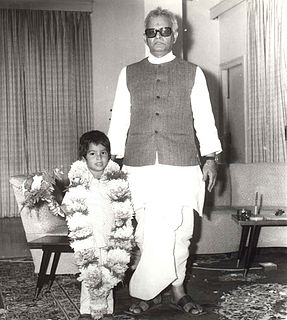
Pt. Bhagwat Dayal Sharma (1918–1993), popularly known as Panditji, was the first Chief Minister of the Indian state of Haryana and later Governor of Odisha and Madhya Pradesh from 30 April 1980 to 14 May 1984.
Raj Bhavan and formerly Barnes' Court is the official residence of the Governor of Himachal Pradesh. It is located in the capital city of Shimla, Himachal Pradesh.
Raj Bhavan is the official residence of the Governor of Sikkim. It is located in the capital city of Gangtok, Sikkim. The present governor of Sikkim is Gangaprasad.
Raj Bhavan Uttarakhand or Uttarakhand Governor's House is the official residence of the Governor of Uttarakhand. Uttarakhand is one of the few Indian states which have two official buildings of Raj Bhavans. There are two buildings of Raj Bhavan in Uttarakhand. The first one is located in the capital city of Dehradun.
The second Raj Bhavan of Uttarakhand is situated in Nainital. The present Governor of Uttarakhand is Baby Rani Maurya.
Raj Bhavan of Nagpur is the Second residence of the Governor of Maharashtra, It is located in the Second Capital city of the state Maharashtra: Nagpur.
Raj Bhavan of Pachmarhi is the Summer residence of the Governors of Madhya Pradesh, It is located in the city of Pachmarhi, Madhya Pradesh.
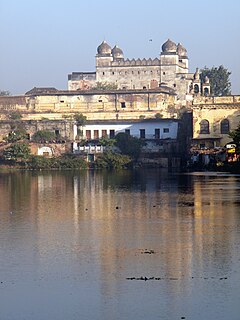
Taj Mahal is a palace built by Sultan Shah Jahan, Begum of Bhopal. It is located beside the Taj-ul-Masajid in Bhopal, India.

Bhopal was a state of India, which existed from 1949 to 1956. The state evolved out of the princely state of Bhopal, and was merged with neighbouring states to form Madhya Pradesh in 1956. Shankar Dayal Sharma of the Indian National Congress served as chief minister of Bhopal state from 1952 to 1956.
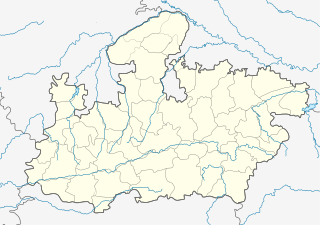
Islamnagar is a panchayat village in the Bhopal district of Madhya Pradesh, India. It is located in the Huzur tehsil and the Phanda block.
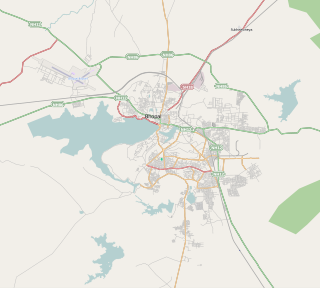
Bhopal Municipal Corporation (BMC) is the Municipal Corporation for the capital city of Madhya Pradesh, it is responsible for the civic infrastructure and administration of the city of Bhopal. The organization is known, in short, as BMC. This civic administrative body administers an area of 648.24 km2. BMC is headed by Mr. Avinash Lavania (IAS) the Commissioner and Mr. Alok Sharma the Mayor. In August 2014, the corporation became one of India’s first municipal corporations to automate citizen services by shaking hands with German software giant SAP SE for the purpose, the commissioner Naik inked the deal at New Delhi.

Bharat Bhavan is an autonomous multi-arts complex and museum in Bhopal, India, established and funded by the Government of Madhya Pradesh.The architect of Bhavan is Charles Correa. Opened in 1982, facing the Upper Lake, Bhopal, it houses an art gallery, a fine art workshop, an open-air amphitheatre, a studio theatre, an auditorium, a museum tribal and folk art, libraries of Indian poetry, classical music as well as folk music.
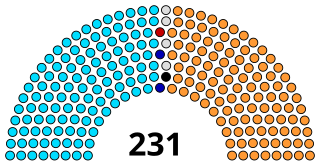
The Madhya Pradesh Vidhan Sabha or the Madhya Pradesh Legislative Assembly is the unicameral state legislature of Madhya Pradesh state in central India. The seat of the Vidhan Sabha is at Bhopal, the capital of the state. It is housed in the Vidhan Bhavan, an imposing building located at the centre of the Capital Complex in the Arera Hill locality of Bhopal city. The term of the Vidhan Sabha is five years, unless dissolved earlier. Presently, it comprises 230 members who are directly elected from single-seat constituencies and one nominated member.

Makrai State was a princely state in India during the time of the British Raj. The seat was in Makrai.

The second Raj Bhavan of Uttarakhand is situated in Nainital. In the pre-Independence era, Nainital served as the summer capital of United Provinces and this building, built like a Scottish castle was christened as the "Government House". Raj Bhavan was built by British as residence of Governor of then North West Province. The beginning of construction of Raj Bhavan was started in April 1897 and it took two years to complete. It is built on European pattern and based on Gothic Architecture. The designers of Raj Bhavan (Nainital) were Architect Stevens and the Executive Engineer FOW Ortel. After Independence it was renamed as Raj Bhavan.
